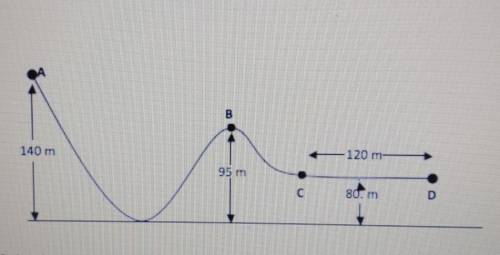

Answers: 2


Another question on Physics

Physics, 21.06.2019 15:40
An apple is falling from a tree. disregarding air resistance, which diagram shows the free-body diagram of the force or forces acting on the apple?
Answers: 3

Physics, 21.06.2019 17:00
These models show the electron structures of two different nonmetal elements. which element is likely more reactive, and why? element 1 is more reactive because it has fewer electron shells and is toward the top of its group on the periodic table. element 1 is more reactive because it has more electrons in its valence shell and is farther to the right on the periodic table. element 2 is more reactive because it does not have a valence shell close to the nucleus, so it will attract electrons. element 2 is more reactive because it does not have a full valence shell, so it will attract electrons.
Answers: 2

Physics, 22.06.2019 00:20
Suppose that an electromagnetic wave which is linearly polarized along the x−axis is propagating in vacuum along the z−axis. the wave is incident on a conductor which is placed at z > 0 region of the space. the conductor has conductivity σ, magnetic permeability µ and electric permittivity ε. (a) find the characteristic time for the free charge density which dissipates at the conductor. (b) write the maxwell equations and derive the wave equation for a plane wave propagating in a conductor. (c) find the attenuation distance at which the incident amplitude reduces to e ^−1 of its initial value. (d) find the electric and magnetic fields inside the conductor. 8 (e) find the power loss per area of the incident electromagnetic wave at the surface of conductor.
Answers: 1

Physics, 22.06.2019 06:00
The frequency of vibrations of a vibrating violin string is given by f = 1 2l t ρ where l is the length of the string, t is its tension, and ρ is its linear density.† (a) find the rate of change of the frequency with respect to the following. (i) the length (when t and ρ are constant) (ii) the tension (when l and ρ are constant) (iii) the linear density (when l and t are constant) (b) the pitch of a note (how high or low the note sounds) is determined by the frequency f. (the higher the frequency, the higher the pitch.) use the signs of the derivatives in part (a) to determine what happens to the pitch of a note for the following. (i) when the effective length of a string is decreased by placing a finger on the string so a shorter portion of the string vibrates df dl 0 and l is ⇒ f is ⇒ (ii) when the tension is increased by turning a tuning peg df dt 0 and t is ⇒ f is ⇒ (iii) when the linear density is increased by switching to another string df dρ 0 and ρ is ⇒ f is ⇒
Answers: 3
You know the right answer?
Solve for the gravitational potential energy at point B.
Use the steps below to show all your work...
Questions

Geography, 05.08.2021 16:50


Mathematics, 05.08.2021 16:50

Social Studies, 05.08.2021 16:50

English, 05.08.2021 16:50

English, 05.08.2021 16:50


World Languages, 05.08.2021 16:50




Mathematics, 05.08.2021 16:50



Mathematics, 05.08.2021 16:50




World Languages, 05.08.2021 16:50

Mathematics, 05.08.2021 16:50




